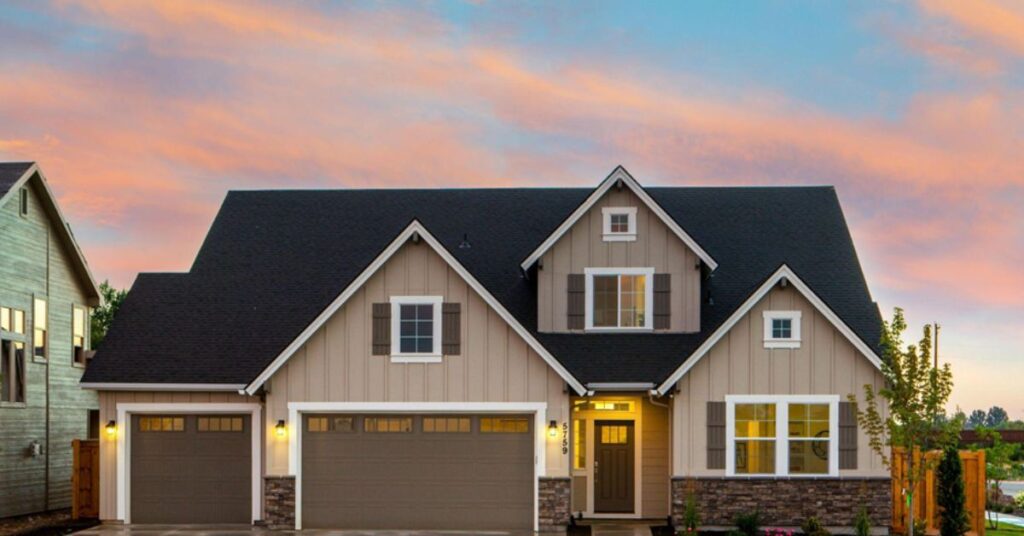When designing or renovating a home, it’s easy to focus on what looks good right now. But what about 10, 15, or even 20 years from now? A home should not only meet your current needs but also adapt to your future lifestyle. The last thing anyone wants is to spend thousands on renovations down the line because certain features no longer work for them.
Whether you plan to stay in your home for a lifetime or simply want to increase its long-term value, making smart choices today will pay off in the future. From durability and energy efficiency to accessibility and convenience, this guide will walk you through the essential elements of a home designed to last.
1. Prioritizing Safety and Durability
One of the most important factors in a forever home is durability. A home should be built to handle the elements, unexpected accidents, and normal wear and tear. Choosing strong materials can save you money on repairs and replacements down the road.
Windows, doors, and roofing play a huge role in a home’s long-term resilience. Impact doors, for example, offer protection from extreme weather and security threats. These doors are made from reinforced materials and shatter-resistant glass, making them an excellent investment for homeowners in storm-prone areas. Aside from weather protection, they also provide added security against break-ins and help block out outside noise, making your home feel safer and quieter.
Beyond doors, the quality of roofing and siding is just as crucial. Metal roofs, for instance, last much longer than traditional asphalt shingles, and fiber cement siding resists damage better than wood. Investing in these strong, weather-resistant materials now can save you from costly repairs later.
2. A Functional, Open Floor Plan
A forever home should be adaptable to different stages of life. Open floor plans have become popular because they provide flexibility and make homes feel more spacious. Instead of being locked into a rigid layout, open spaces allow for easier reconfiguration as needs change.
For example, an extra room that starts as a playroom for kids can later become a home office or a guest bedroom. Fewer interior walls also create better airflow and natural light distribution, which can make a home feel more comfortable.
As homeowners age, moving around a house should be effortless. Open floor plans make it easier to navigate without feeling cramped, especially for those with mobility concerns. This kind of thoughtful design makes sure your home remains practical and comfortable for decades.
3. Energy Efficiency for Lower Bills
A home designed for the future should be energy-efficient. Not only does this reduce your carbon footprint, but it also keeps utility costs manageable in the long run. Small changes in design can make a big difference.
For example, double- or triple-pane windows provide better insulation, keeping indoor temperatures steady without overworking heating and cooling systems. Energy-efficient doors and windows help prevent drafts, reducing the need for constant air conditioning or heating.
Solar panels are another consideration. While they require an upfront investment, they significantly lower energy bills over time. Many homeowners even sell excess energy back to the grid, turning their home into an energy-efficient powerhouse.
Additionally, smart thermostats can regulate temperatures based on your routine, ensuring no energy is wasted. LED lighting and high-efficiency appliances are other easy ways to reduce energy consumption. These features add convenience while keeping monthly expenses under control.
4. Universal Design for All Stages of Life
No one likes to think about getting older, but it’s important to consider how a home will function as mobility needs change. Universal design ensures a home is comfortable for people of all ages and abilities.
A step-free entrance, for instance, makes it easier to carry groceries inside now and eliminates mobility concerns later. Wider doorways and hallways can accommodate wheelchairs or walkers if ever needed.
In bathrooms, walk-in showers with built-in seating and grab bars provide both style and function. Lever-style door handles, rather than traditional knobs, are easier to use for people with arthritis or limited hand strength. These small design choices make daily life simpler without sacrificing aesthetics.
5. Low-Maintenance Materials and Finishes
Nobody wants to spend their weekends on constant home maintenance. A forever home should be easy to care for, with materials that hold up over time.
Quartz countertops, for example, are more durable than marble or granite and don’t require sealing. Luxury vinyl plank flooring resists scratches, moisture, and wear better than hardwood, making it ideal for high-traffic areas.
For exterior durability, fiber cement siding lasts longer than wood and resists damage from moisture and pests. Composite decking is another great choice for those who want the look of wood without the maintenance.
6. Storage That Adapts to Changing Needs
One of the biggest complaints homeowners have is a lack of storage. A forever home should be designed with versatile, built-in storage solutions that can change over time.
Walk-in closets with customizable shelving provide plenty of room for clothing and accessories. A well-designed pantry makes kitchen organization effortless. In the garage, wall-mounted storage keeps tools and equipment easily accessible.
Hidden storage is another smart feature. Under-stair drawers, built-in bookshelves, and multi-purpose furniture with storage compartments keep clutter out of sight while maximizing space.
Having enough storage now prevents future headaches when your needs grow.
7. Smart Home Features for Convenience
Technology is constantly evolving, and incorporating smart home features makes everyday life easier.
Smart locks let homeowners unlock doors remotely, while smart lighting systems can be controlled through an app. Security cameras and video doorbells provide peace of mind, whether you’re home or away.
Automated window shades can adjust throughout the day to regulate indoor temperature, reducing energy use. Voice-controlled assistants can manage everything from music to shopping lists.
A forever home is more than just a place to live—it’s a space that grows and evolves with you. By choosing durable materials, prioritizing energy efficiency, and planning for future needs, you can create a home that remains comfortable and functional for decades.
Thinking ahead saves money, eliminates stress, and ensures your home continues to meet your lifestyle. Whether it’s impact doors for security, an open floor plan for flexibility, or smart home features for convenience, every detail matters in designing a home that truly lasts.







